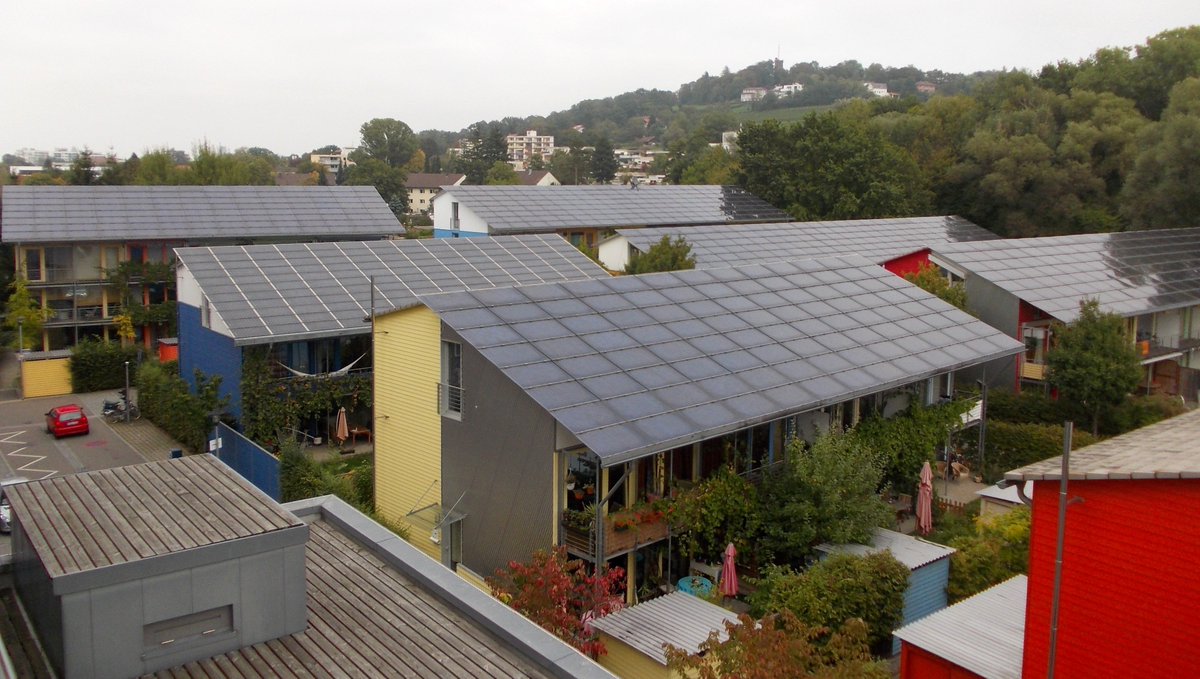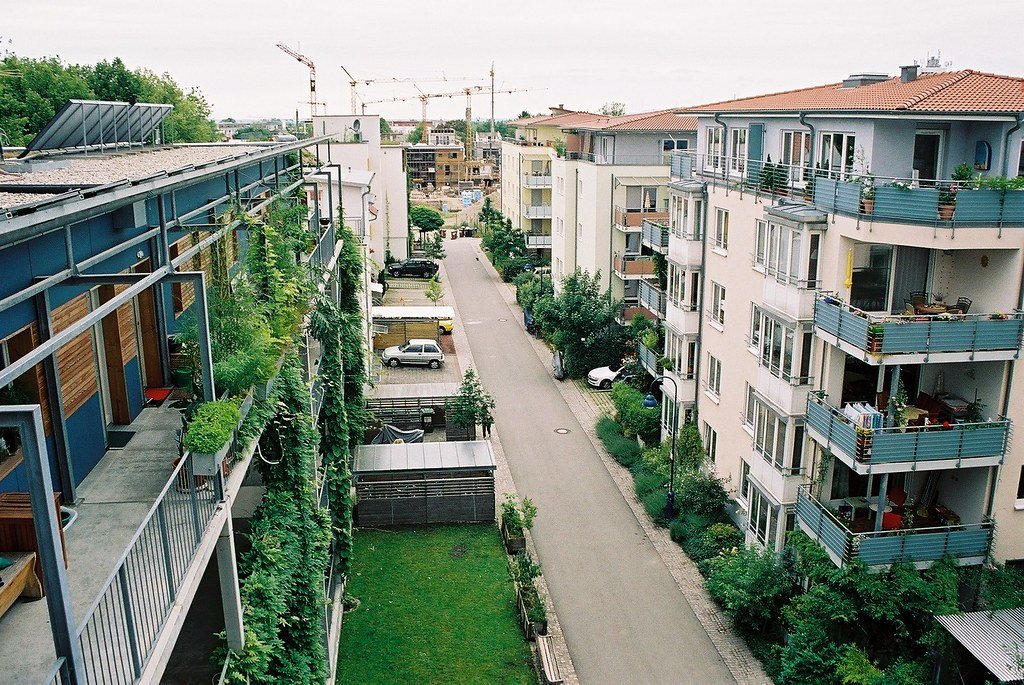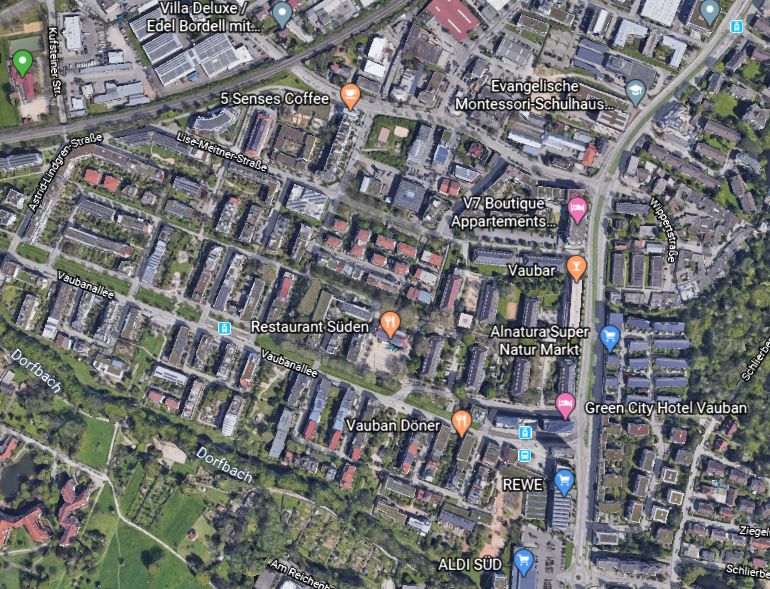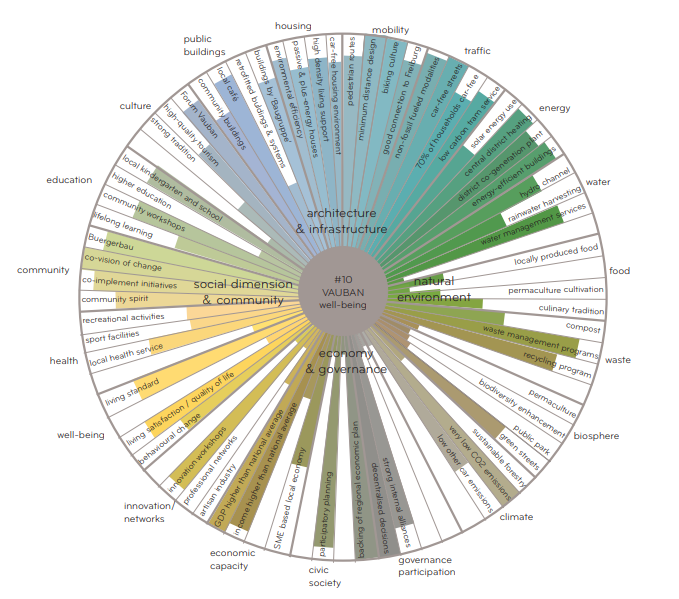This thread identifies some important things to consider for those proposing #gentledensity, co-op living, #carfree, #lowcarbon or placemaking and so I& #39;ve put together my own thread giving a few more details on Vauban, Germany. 1/16 https://twitter.com/SarahJ_Berry/status/1293470689501093888">https://twitter.com/SarahJ_Be...
Firstly, #carfree. Vauban ensured that BEFORE it was heavily populated, it was on a tramline. This ensured it already had great connections.
Freiburg, the city Vauban is part of has a population half the size of Sheffield but as many miles (21m) of tramlines & broader reach. 2/16
Freiburg, the city Vauban is part of has a population half the size of Sheffield but as many miles (21m) of tramlines & broader reach. 2/16
Compare this to Manchester, which has three times the tram line distance but almost ten times the population & you get the picture why #carfree works in some places but not in others! But Vauban is not car free. Cars can travel 30kph on main roads & 5kph on side streets. 3/16
Street parking is for disabled persons only. Parking is available in an offsite multi-storey (£30k a spot). 40% of residents AGREED to be car free.
Off-street parking is great for public space, in Barcelona, underground parking has been stimulated, which saves public space. 4/16
Off-street parking is great for public space, in Barcelona, underground parking has been stimulated, which saves public space. 4/16
The car free development (red outline) still allow cars around it but no home is more than 500m from public transport. There was 15% car ownership (now 30%) & great cycling facilities, such as covered storage. 57% of people sold their car to move to the development. 5/16
In 2006, there was 60% home ownership/40% rental. 55% of homes owned by management level workers, 25% traditional working class, 20% self employed. This may hint at why #carfree works more easily. Build finance was arranged by the council, much like we used to do in the UK. 6/16
The land was publicly owned (old barracks, 1943 picture) & the council CHOSE to support local people (75% being from Freiburg), rather than sell to developers. Land price was set, so no bidding war. Our councils could do all of this via CLTs/self build register. 7/16
More than 100 homes are passivhaus & a sales condition was to meet a set Kw/hr standard. Heat recovery, biogas & solar provides most heating & electricity needs. Triple glazing is standard & build costs were a little above UK prices (2006) but without UK planning risk. 8/16
The sales premium is between 22% and 75% (2006 figures), so it& #39;s a profitable development! The site is a mix of townhouses with private balconies and shared communal gardens. Some apartments have balconies but there& #39;s a lot of communal space. It really is #gentledensity. 9/16
Co-operative, social living was built in to design, finance & development, as well as the spaces but with terraced townhouses, privacy is still a feature. It has plenty of amenities & safe space for community activities & children. Carpooling & car-clubs are popular. 10/16
However, Vauban is a victim of its own success. In some ways, its model is exclusionary & the incomes of those living there example that but due to Freiburg& #39;s great public transport & small city, it does a far better job at enabling #carfree than 99% of UK cities could. 11/16
A similar model in the UK may serve to be more exclusionary because unlike UK& #39;s #carfree campaigners, Vauban planners/residents recognise that driving enables social mobility, so accepts that nuance not just in design but in sales. 12/16 https://www.theargus.co.uk/news/18175871.brighton-hove-car-free-2023-plans-pushed/">https://www.theargus.co.uk/news/1817...
Understanding nuance ensures Vauban is a success & attractive to many. The fact it attracts wealthier residents shows it& #39;s a model which works. Core principles, eg-low carbon & limiting cars, can operate across UK developments. Especially on small sites within communities. 13/16
We need new towns & places and Vauban gives us an example of what could be delivered. Land is not expensive, land with planning/planning potential is! Therefore councils could think about how they can facilitate growth in the next decade by writing new self build policies. 14/16
Some detractors will say, & #39;development damages the environment& #39; but in terms of #biodiversity, we can & should be building in biodiversity & living with nature.
I understand an empty field is not actually empty but a well designed development can increase biodiversity. 15/16
I understand an empty field is not actually empty but a well designed development can increase biodiversity. 15/16
Lots more can be said & for anyone interested, here are some of the places I got my info. 16/16
http://www.buildinglifeconsultancy.com/articles/baugruppe-lessons-freiburg-cooperative-housing
https://www.buildinglifeconsultancy.com/articles/... href=" http://www.clear-village.org/v3/wp-content/uploads/ClearVillage_observatory10.pdf
https://www.clear-village.org/v3/wp-con... href=" https://www.smartcitiesdive.com/ex/sustainablecitiescollective/words-most-successful-model-sustainable-urban-development/229316/">https://www.smartcitiesdive.com/ex/sustai... https://www.researchgate.net/publication/269781278_The_sustainable_Urban_district_of_vauban_in_Freiburg_Germany">https://www.researchgate.net/publicati...
http://www.buildinglifeconsultancy.com/articles/baugruppe-lessons-freiburg-cooperative-housing

 Read on Twitter
Read on Twitter











